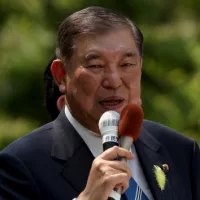
eROMAZe/iStockBy GUY DAVIES and PARTH M.N., ABC News
(LONDON) — For the best part of two-and-a-half months, Jaivir Nain, 36, has been camped out in a truck along with seven other farmers on the outskirts of India’s capital city of Delhi.
While he is away, the four-acre farm he owns is being run by his family who live off a meager $1,000 a year income. Nain’s family are in over $13,000 of debt and they are struggling to take care of the farm in his absence.
But for Nain, and the hundreds of thousands of other farmers protesting against a series of controversial new agricultural laws, the collective livelihood of their industry which employs over half of India’s working population is at stake.
“This movement is the movement of the masses,” Nain told ABC News at his protest camp on the outskirts of Delhi. “From the poorest to the richest farmer. This movement is for everyone.”
Since the Indian government, headed by Prime Minister Narendra Modi, pushed through three laws in September 2020 designed to modernize Indian agriculture, hundreds of thousands of farmers — mainly from the northern states of Punjab and Haryana — have staged sit-ins at three different locations around the national capital of Delhi demanding their repeal.
Critics and farm unions say these laws will scrap the Minimum Support Price which guarantees a certain level of income for farmers, even in times of drought, and encourage more private investment, which would give large corporations more power over farming and agriculture.
Modi, meanwhile, has said the laws will “give farmers the freedom to directly sell produce to buyers, unshackling them,” and has promised to improve farmers’ incomes over the next year.
But the implementation of the laws has been suspended by India’s Supreme Court and Nain, along with his fellow farmers, are demanding no less than their full repeal.
The protests reached a flashpoint on India’s Republic Day on Jan. 26 as India celebrated the anniversary of their constitution when thousands of farmers stormed Delhi’s historic Red Fort.
The scenes captured international attention with pop singer Rihanna and climate activist Greta Thunberg both tweeting to raise awareness about the protests. The Indian government dismissed those interventions as “neither accurate nor responsible,” and said “vested interest groups” had forced their agenda on the protests.
Government figures often characterize sections of the protest movement as Sikh separatists, with Modi saying in December that the farmers had been misled by a “conspiracy,” according to local media.
Disha Ravi, a climate activist in Bengaluru and supporter of India’s Fridays for Future movement and inspired by Thunberg, was arrested last week and charged with sedition after she posted a “toolkit” to show support for the farmers’ protest online. Some observers say that the arrest is a sign of a broader crackdown on dissent in the world’s largest democracy but Delhi Police said the toolkit was designed “to wage economic, social, cultural and regional war against India.”
Despite the polarized nature of the protests, the struggles of Nain’s family have long been played out across the country.
According to the Indian Government National Sample Survey Office, 52% of all farmers are in debt. India records one of the highest annual rates of suicide in the world, according to the WHO. Over 10,000 farmers and laborers died by suicide in 2019, the National Crime Records Bureau recorded.
“[India’s farmers] have essentially been getting poorer for decades as landholdings become smaller,” Gareth Price, Senior Research Fellow for the Asia-Pacific Program at the think tank Chatham House, told ABC News.
While the agricultural sector has long been in need of reform, part of the problem was that the laws in September were rushed through in a matter of days, with limited consultation, he said. With the protests bringing negotiations with the government to a standstill, the future for the sector is more unclear than ever, he said.
“The fundamental challenge is that you would be expecting people to move off the land into manufacturing jobs, but India is a bit of an outlier in that over the past few decades it hasn’t produced enough of those,” according to Price. “So you have more and more people reliant on the land.”
And back on Nain’s farm, they are struggling to feed their family.
“We all do the farming, none of us are literate,” Indravati, Nain’s sister-in-law, told ABC News. “We were born into poverty, and married into poverty.” In Nain’s absence, she is working overtime to make ends meet.
“I have to wake up early in the morning to milk cows and buffaloes, then water the farmland, when Satyavan or Jaivir are away,” Indravati said. “Then we make food, prepare our kids for school. These responsibilities are usually shared. But the entire village is in these protests. Even the neighbors are helping in looking after the farmland of those that are camping at protest sites.”
Yet such is the importance of the protests in their eyes, that even with the extra work, Indravati has plans to visit the protesters, and regularly helps ferry farmers to and from the protest sights.
“Women are equal partners in this protest,” she said. “We are not going to back down.”
At the protest sites across Delhi, thousands of protesters are showing no signs of backing down.
“This movement will not fail, all the farmers of India are one in this movement,” Nain said. “We will only move when we are victorious. Victory shall be ours and the evil laws will have to be taken back.”
Copyright © 2021, ABC Audio. All rights reserved.















